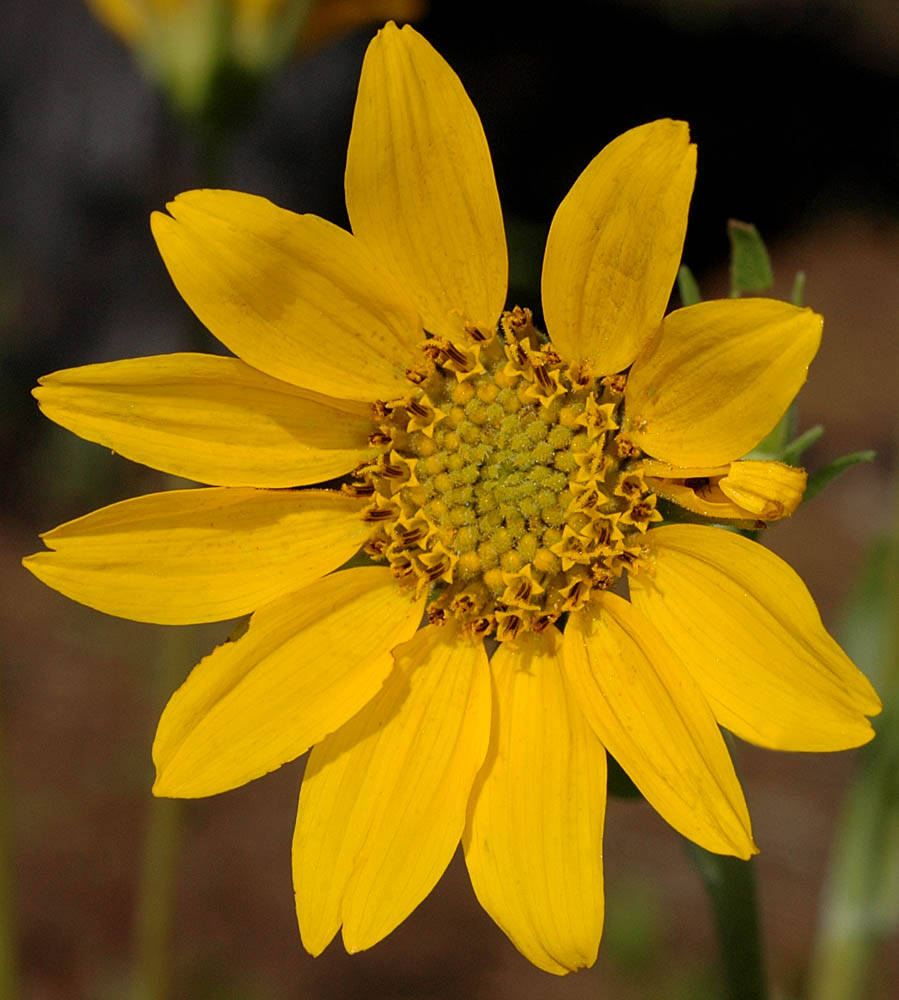Balsamorhiza macrophylla
Balsamorhiza careyana
large-leaf balsamroot
Carey's balsamroot
up to 35 cm, tomentose; from single taproot.
forming clumps, 23–62 cm, green, sparsely villous-hirsute; more densely so below heads.
lanceolate-oblong, 1-pinnately divided;
pinnae toothed, with teeth only on lower margins;
surfaces tomentose;
basal leaves in 1–few rosettes;
blades 12–22 × 6–8 cm;
pinnae 10–36 mm wide;
petioles 7–20 cm;
cauline blades 1.5–5 × 0.3–0.9 cm;
petioles 6–9 cm.
simple;
margins entire to slightly crenate;
surfaces hirsutulous to hirsute;
basal leaves in multiple rosettes;
blades deltate, 7–30 × 4.7–16 cm, bases cordate to hastate;
petioles 7.5–36 cm;
cauline proximal pair generally opposite, lanceolate;
distal alternate;
blades tapering at both ends, 2.5–8.2 × 0.4–2.8 cm;
petioles 0–7.5 cm.
with 1 terminal head.
with 1 larger; terminal head and 1–6 smaller; axillary heads;
peduncles 0–20.5 cm.
14–18 × 25–30 mm.
terminal 9–15 × 15–25 mm; axillary 9–13 × 6–12 mm.
14–16, yellow;
rays 35–40 × 8–11 mm.
8–20 on large heads, 5–9 on small heads, yellow, persistent after drying;
rays 18–26 × 5–11 mm.
~9 mm.
6.5–8.5 mm.
ovate-lanceolate, 20–25 × 5–6 mm;
tips acuminate, tomentose.
ovate-lanceolate, 8–34 × 4–7 mm; outer often tapered to caudate or with acuminate tips, villous to tomentose.
8–9 mm, glabrous.
5.5–7.5 × 2–2.5 mm, generally strigillose, sometimes glabrous.
10–12 mm.
11–13 mm.
=100 ± 2.
=38.
Balsamorhiza macrophylla
Balsamorhiza careyana
Dry, open areas. Flowering May–Jul. 700–1400 m. BW. ID; east to WY. Native.
True B. macrophylla is a decaploid centered on the Wasatch Mountains in Utah and Idaho. The plants in Oregon and western Idaho are also high polyploids, but they differ morphologically from classic B. macrophylla in their denser pubescence and the shape of their leaves. These eastern plants have been given the name B. macrophylla var. idahoensis. However, further study will likely show that they have a different parentage than B. macrophylla s.s. The specific epithet “macrophylla” means large-leaved, as the leaves are much larger than those of the other members of section Balsamorhiza.
Open areas, open pine woodlands. Flowering Apr–Jul. 0–1300 m. BW, Casc, Col, ECas, Lava. WA. Native.
Balsamorhiza careyana usually grows east of the Cascades but intergrades broadly with B. deltoidea in the Cascades and along the Columbia River. Pure B. careyana is easily distinguished by a combination of strigillose fruit, ray florets that are persistent after drying, and generally more heads per stem than B. deltoidea. Cascade specimens can be difficult to determine and have been separated as B. careyana var. intermedia in other treatments. The two species should perhaps be considered varieties of the same species.
Abigail (Abby) Moore
Abigail (Abby) Moore




